The pilgrims are organised by 'chapter', and each chapter, or group of chapters, has its own leaders who coordinate with Notre Dame de Chretianite, let them know how many will be coming, gather registration fees, and help their own groups get to the starting point, Notre Dame Cathedral in Paris, at the right time. The British group in fact had four chapters: Our Lady of Walsingham,
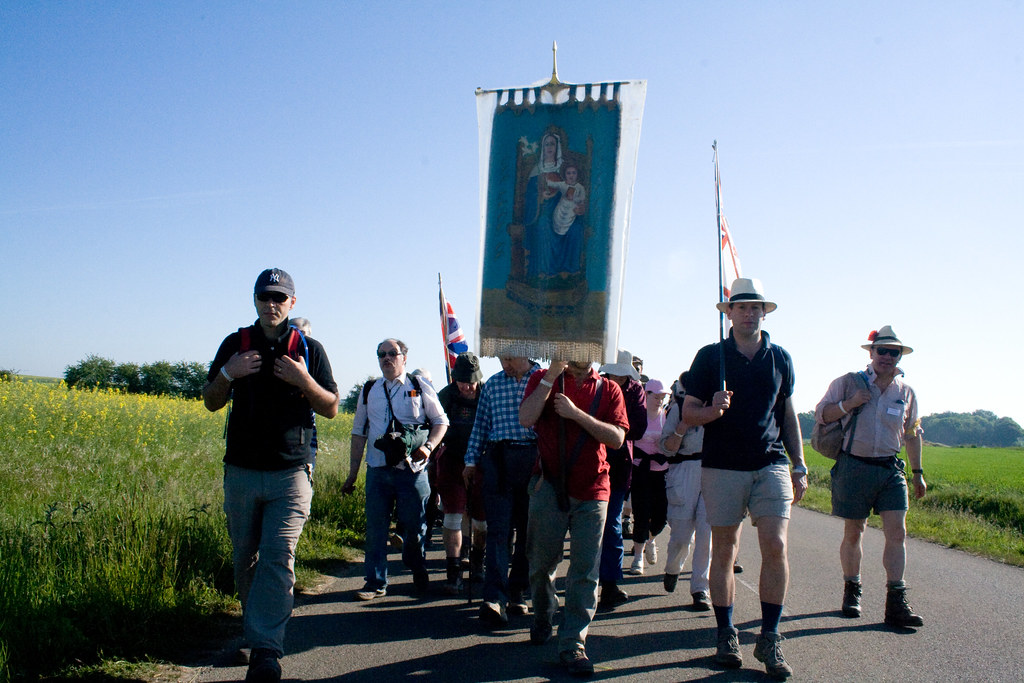
St Edward the Confessor (a 'Juventutem' chapter),

St Alban (another Juventutem chapter),

plus a chapter composed of boys from Chavagnes International College, dressed in scout uniforms who for the most part carried banners in the other three chapters. Here they are at Mass on the Saturday.
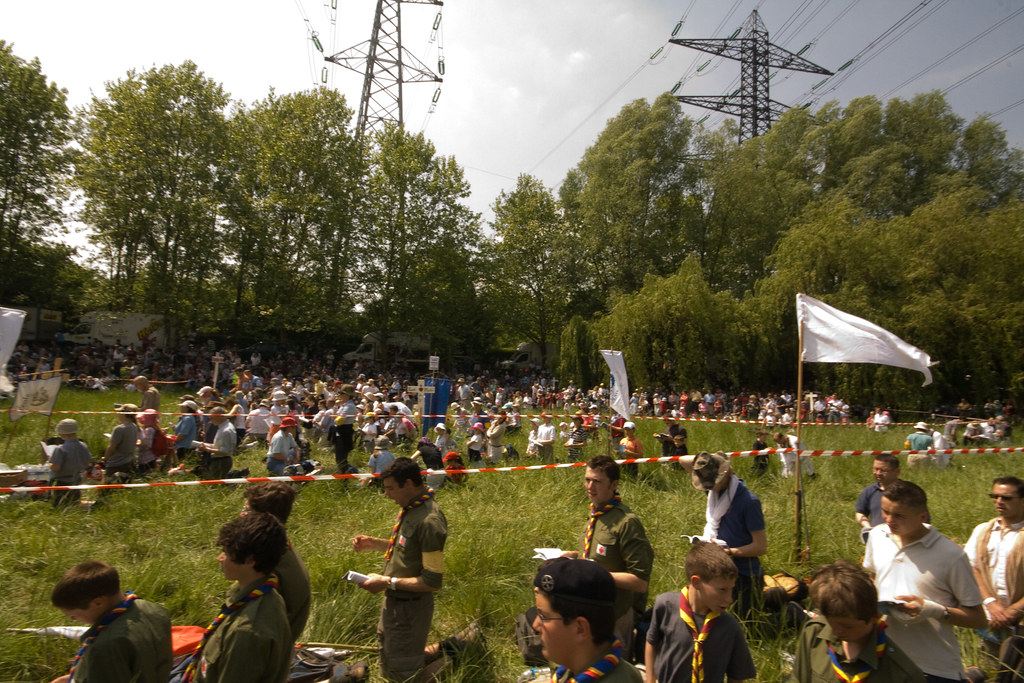
Chapters are quite small : ours were only about 25 people each, and in practice were often less than that as people dropped out (some people also join the pilgrimage at later stages, so there are more in Chartres than left Paris). There are getting on for 200 chapters in total, and although I took a lot of photos of chapter banners in different contexts these are only a selection. The American chapter, for example, I only ever saw from a distance, although I met some of them later in Chartres.
In addition to the official British group, there was a group of British friends who travelled by minibus and greeted us at various points on the journey.

Finally there are are special chapters for children and for families, who do a reduced version of the walk. We didn't have any of these this year ourselves.
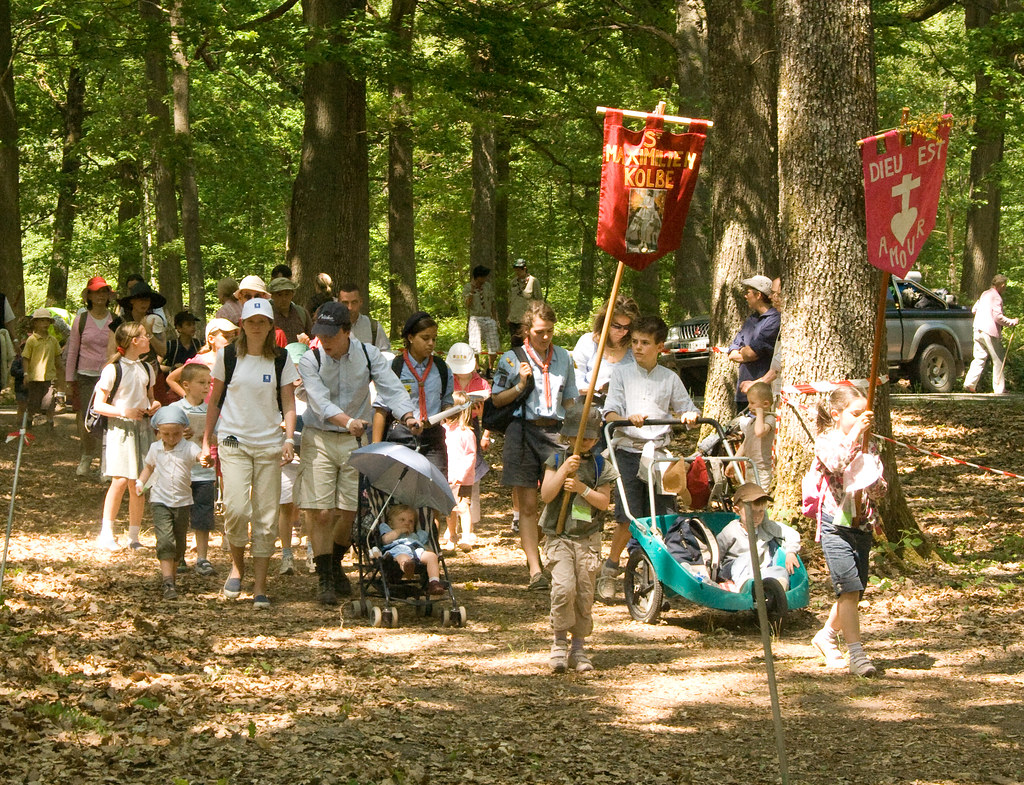
Chapters walk together with gaps between them, which is important to let cars pass and so forth. Despite the length of the walk people don't tend to lag behind; there is a good esprit de corps, and when things get really bad you simply avail yourself of the Order of Malta medics, whose vans are to be seen at intervals at the side of the road, and / or the transport provided to take the 'fatigued' to the next stop.

Finding myself completely crippled by blisters at lunch on the second day, I joined a large group waiting for transport, and we were taken in coaches and people carriers to the next rest stop, where we spent the rest of the afternoon. Finally we were taken by coach to the campsite. While at the rest stop, a village called Gaveron, there were French devotions and an open church to pray in,
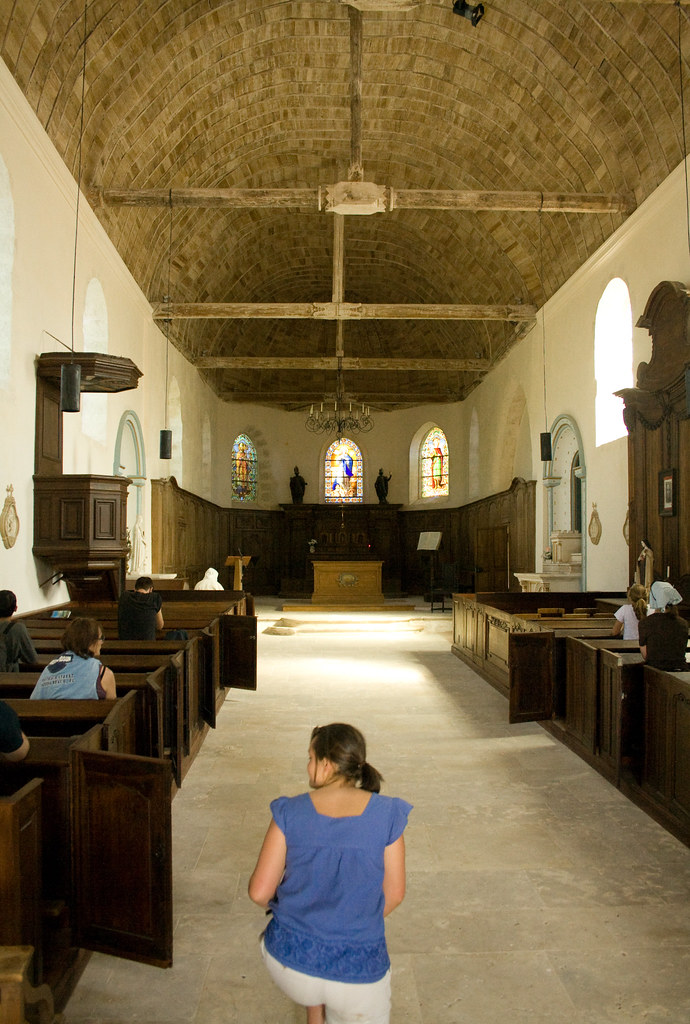
and loos. I spent much of the time asleep, but did manage to see a lot of chapters pass when the column caught up with us, such as these.
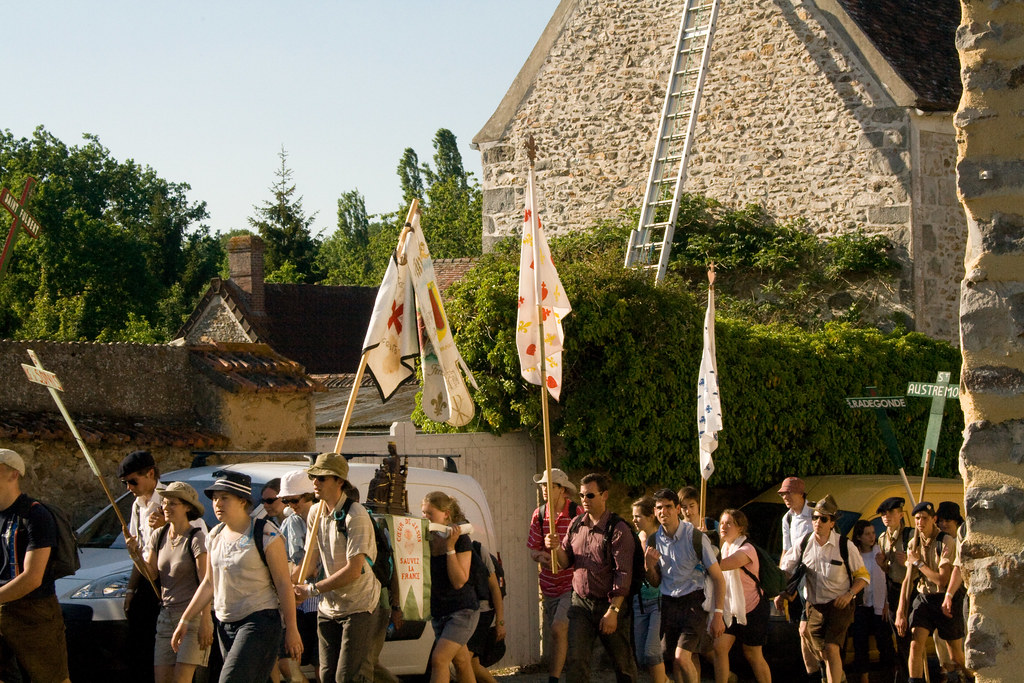
Chapters are marked by banners, or failing that with a painted wooden cross with their name on it; they often carry national flags as well, and occasionally, like this one, a small statue on a bier.
The two camp sites, at Choisel and Gas, are staggering feats of organisation. There are large 'communal' tents for different nationalities (men and women separate), and open spaces for those with individual tents - 'pop-up' tents have become very popular, and I found mine excellent. To say that washing facilities are basic would be an understatment. Soup in the evening and coffee or hot chocolate in the morning is provided, with the ubiquitous bread rolls which also appear at lunch time, but otherwise food is the responsibility of the pilgrims.
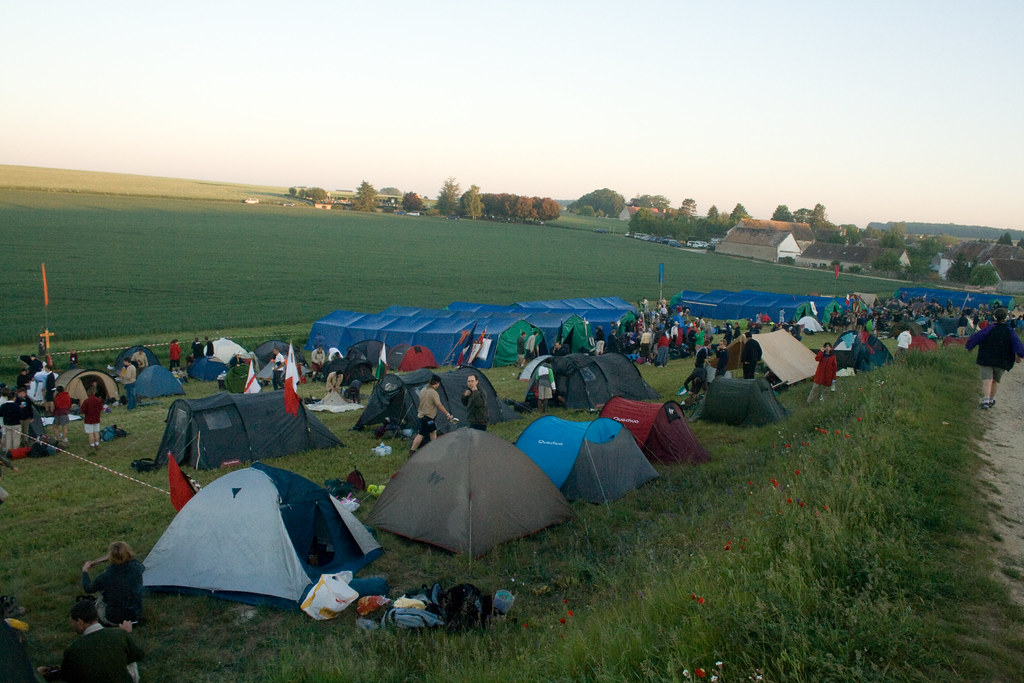
Pilgrims carry a small bag on their backs mainly for their lunch. All the heavy luggage, including tents, is taken by lorry. Lorries, bags, and the correct area of the campsite for your group are indicated by a system of colour coded ribbons.
By chance I stumbled over the Priests' area in the Gas campsite,
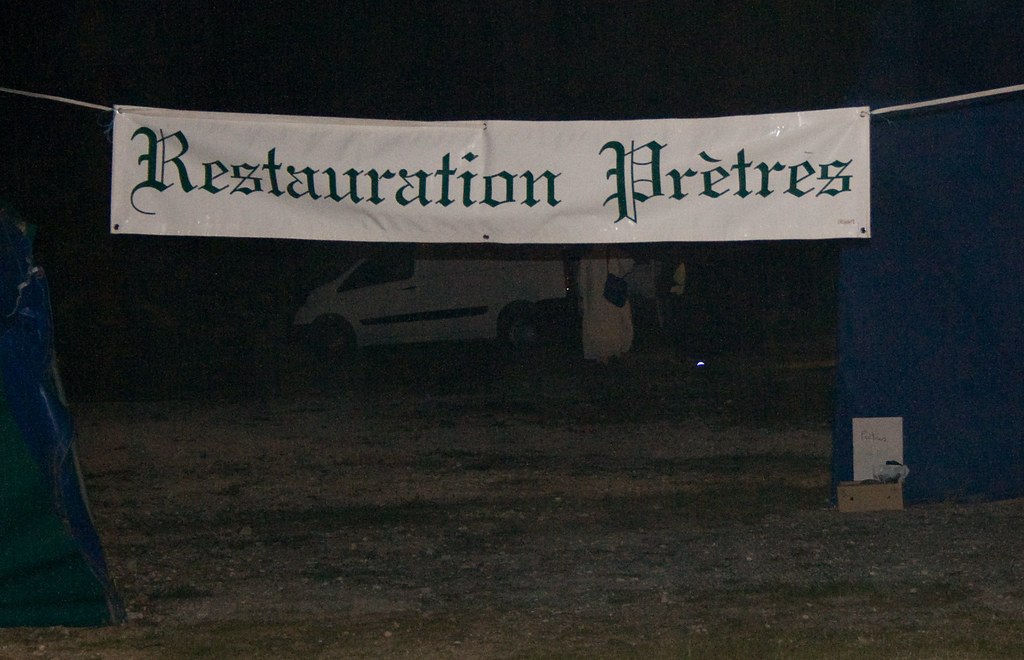
where they were being given a more substantial evening meal. In the morning I saw them saying their private Masses in a special tent in the same place. I'm glad they get looked after a little, since walking in cassock and surplice must be quite something in the heat - or for that matter the mud.
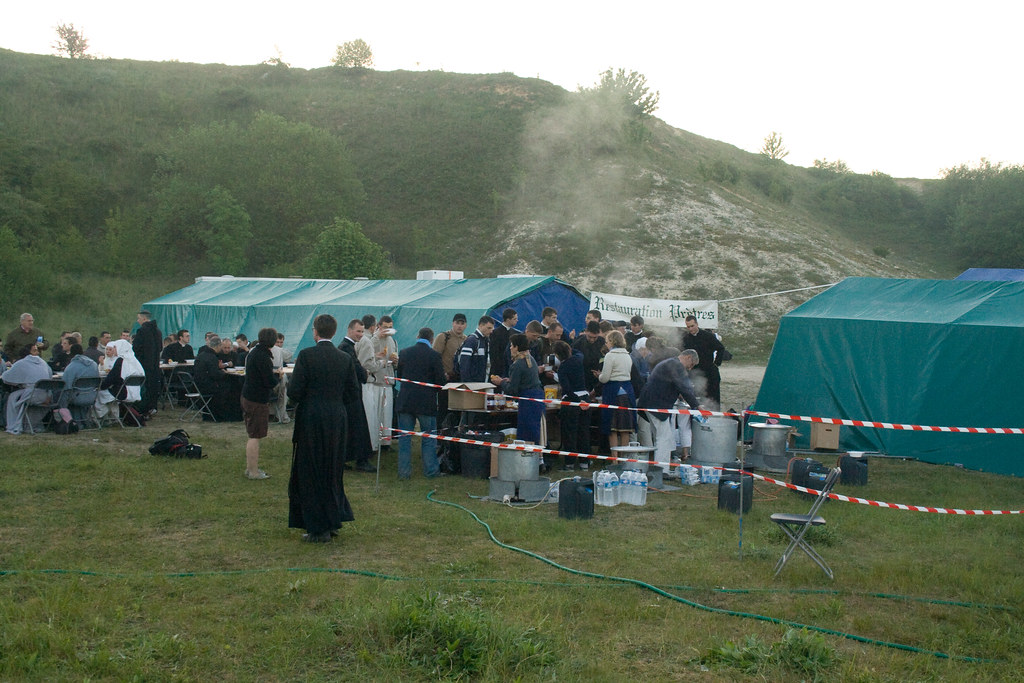
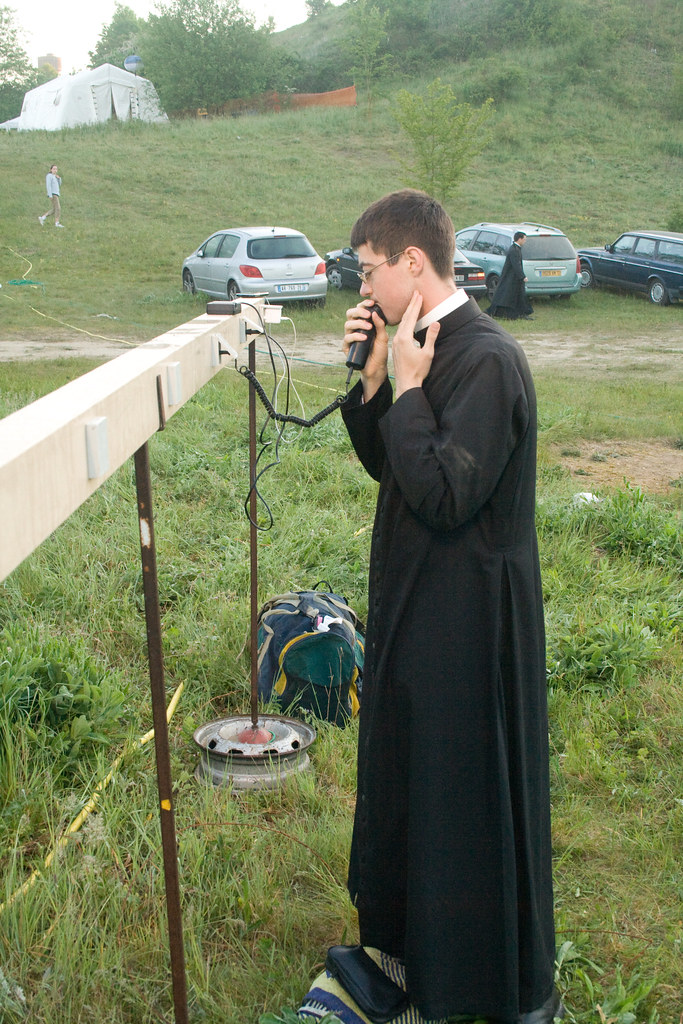

In my next post I'll say more about what it is actually like.
For the rest of my photos, see here (slideshow).
No comments:
Post a Comment